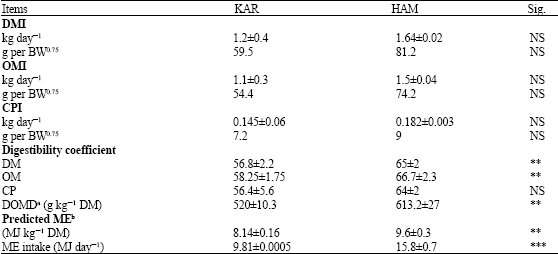Research Article
Determination of Digestibility and Nutritive Value of Iranian Alfalfa Varieties Using In vivo Technique in Sheep
Department of Animal Science, Islamic Azad University-Shabestar Branch, Shabestar, Iran
Afshar Mirzaei-Aghsaghali
Department of Animal Science, Islamic Azad University-Shabestar Branch, Shabestar, Iran
Ali Mirza-Aghazadeh
Department of Animal Science, Uromia University, Uromia, Iran
Amir Reza Safaei
Animal Science Research Institute, Karaj, Iran









